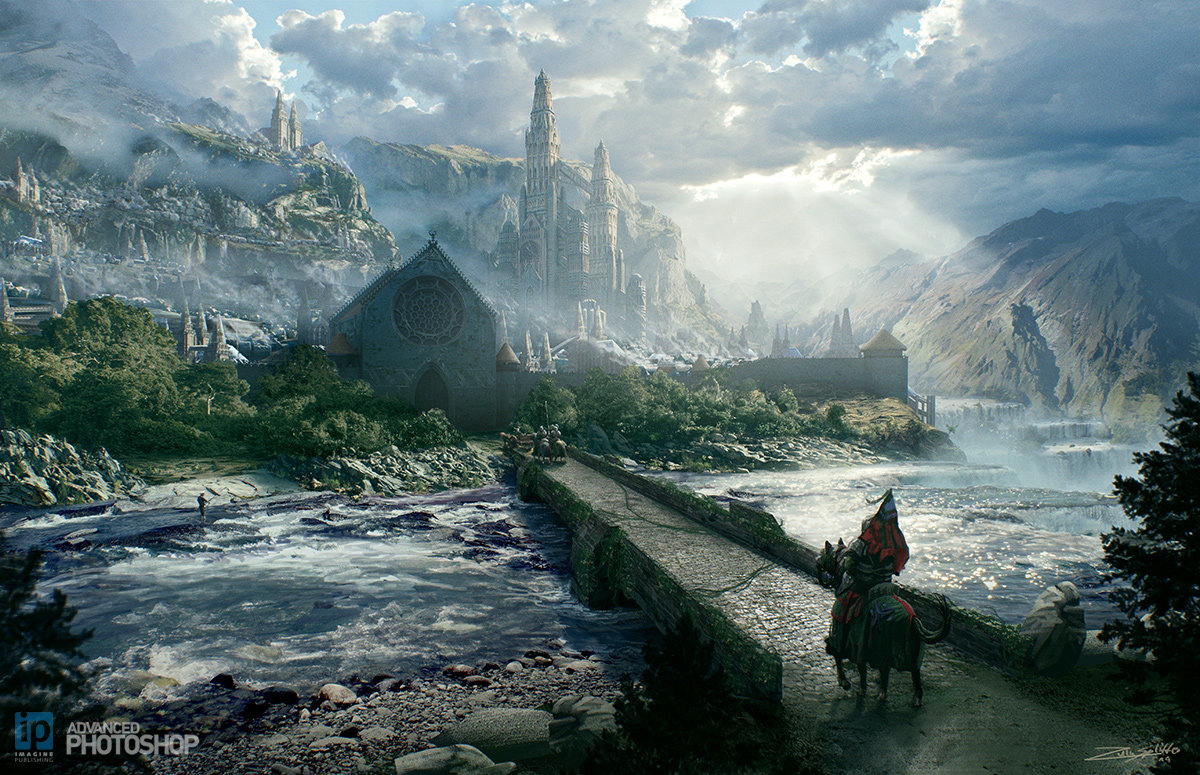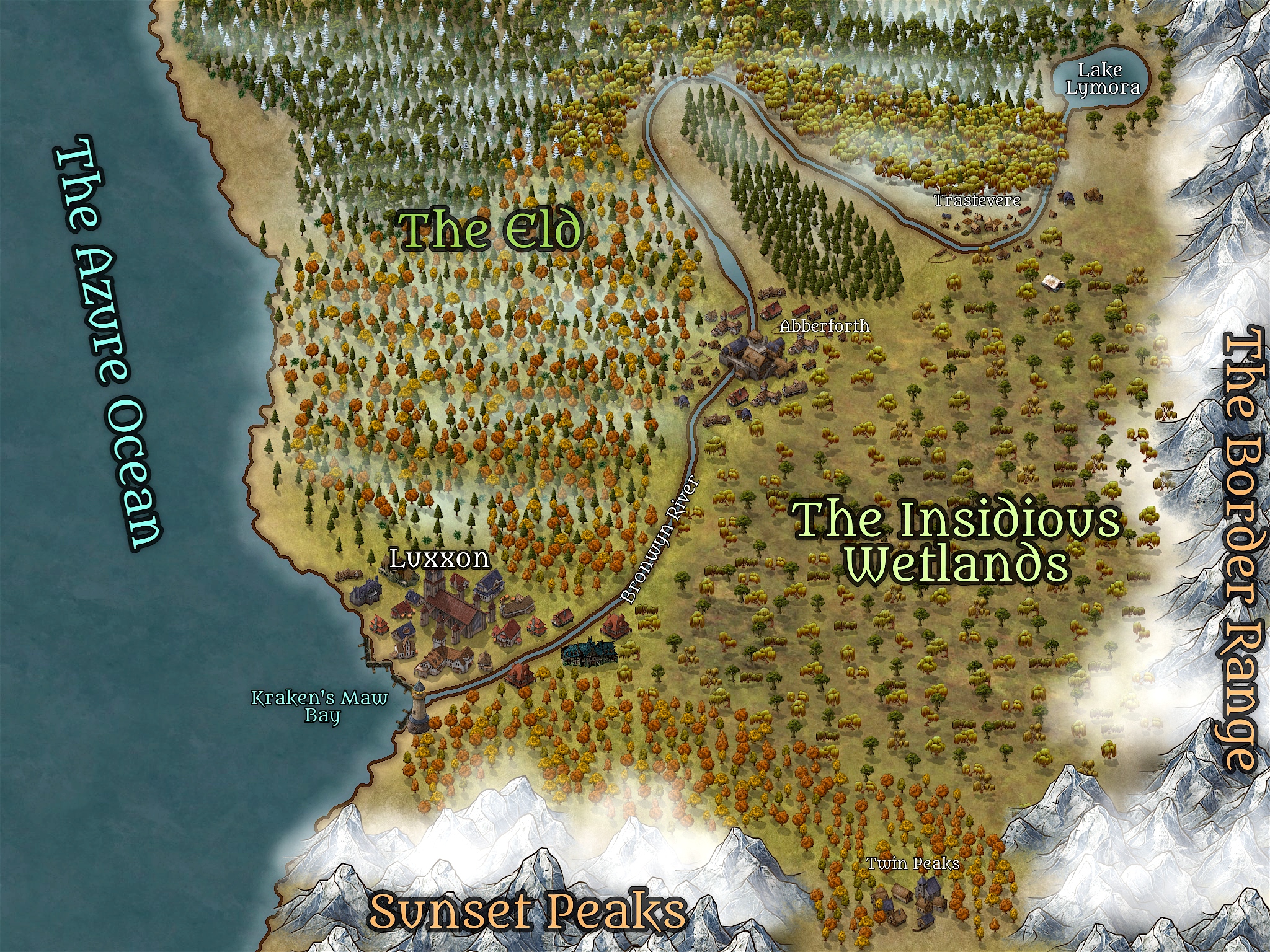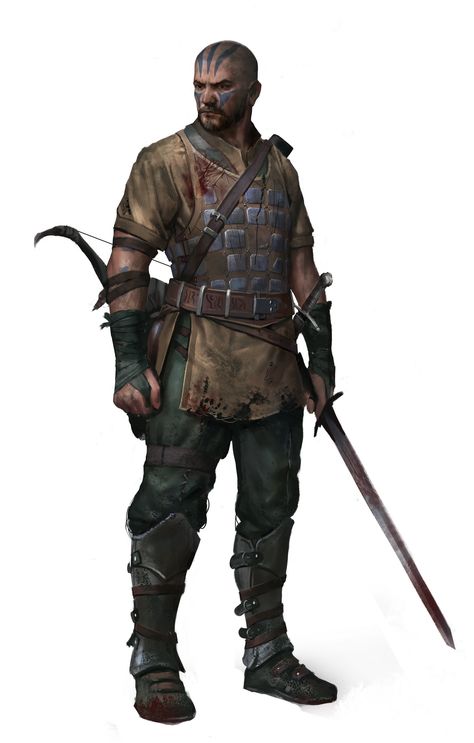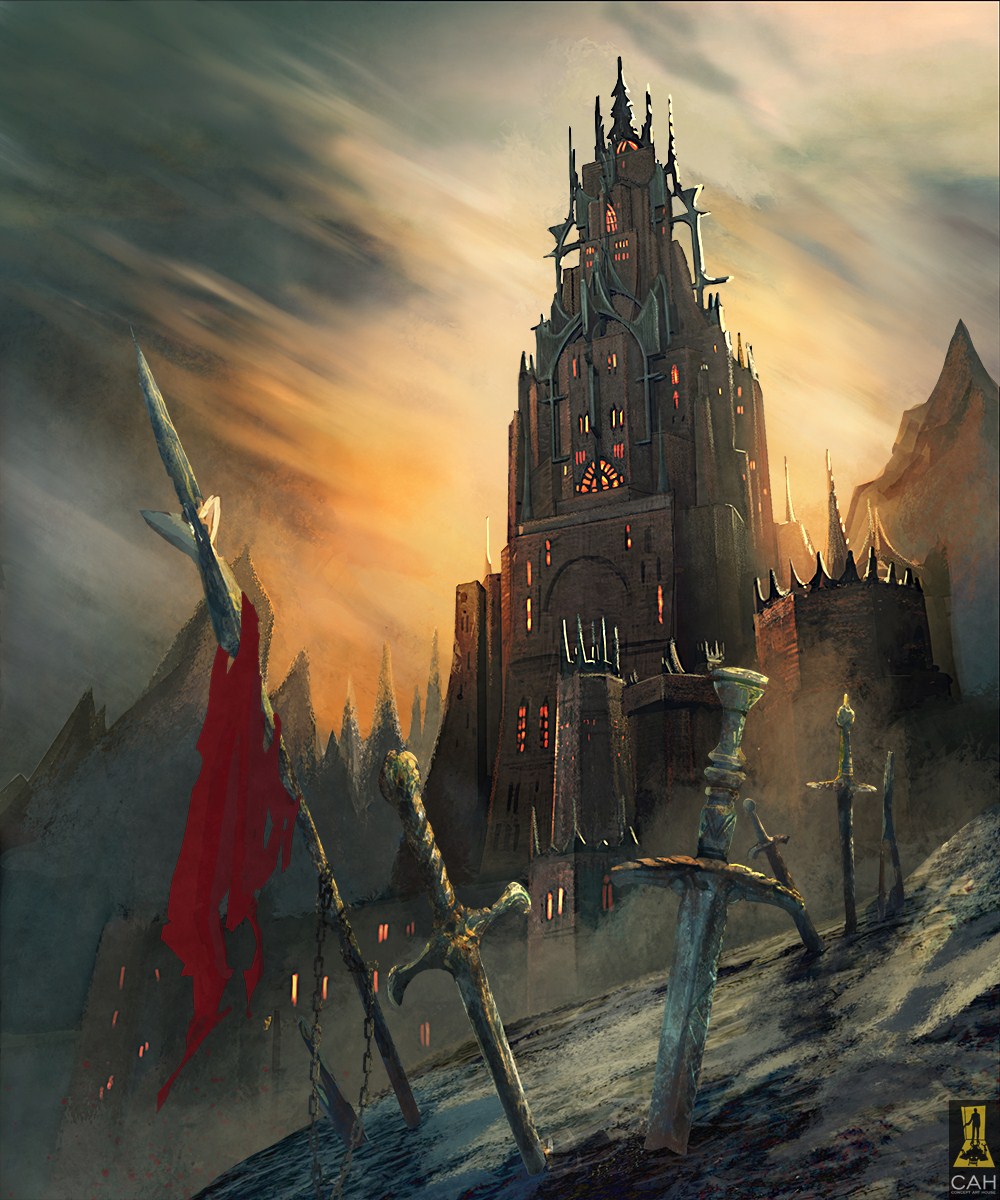The Republic of Amoa
Amoa, also known as the Republic of Amoa, is a country in north-western Elyria occupying the region between the Sunset Peaks, the Eld, and the Border Range. The capital and largest city is Luxxon, which is located along the western coast on the Azure Ocean. Around 90% of the nation's population resides in and around the capital. The Republic has no shared borders, but its closest neighbour is the sovereign land of Anvilmoor to the south. It is a parliamentary republic. The legislature, also known as the Oireachtas, consists of the Low House, the High House, and an elected Primarch who serves as a largely ceremonial head of state, but with some powers and duties. The Republic Head is the Highmarch, who is elected by the Low House and appointed by the Primarch; the Highmarch, in turn, appoints other government ministers.
The nation was created as the Free Society of Man in 1151 as a result of the Golden Exodus and with the help of the dwarvish nation of Anvilmoor. The burgeoning government struggled to find its footing before the Constitua Pima was adopted in 1227, in which the country was named "Amoa" and became a republic, with an elected non-executive president as head of state. The Republic of Amoa has a positive working relationship with the nation of Anvilmoor, and a cold, distant relationship with their former lords in the land of Myth'Aurum. The republic continues to expand northward, but their progress was stifled by the fey spirits within the Eld. Their most recent settlement is Trastevere, the frontier town in the north, which was founded in 1395.
Name
The 1151 state was "styled and known as the Free Society of Man". The Constitua Prima, adopted in 1227, provides that "the name of the state is Admère, or, in the Common language, Amoa". The name Admère, when translated to the Common language, invented by the exodans who seceded from Myth'Aurum, means "Land of Broken Chains" to reflect the human liberation of the elven slave-drivers. As well as "Amoa", "Admère", or "the Republic of Amoa", the country is also referred to as "the Republic", "the Frontier of Civilization", or "the Northlands". In an Amoan republican context, it is often referred to as "the Free State" when referencing the country in matters of government.History
The Chains that Bind From as far back as any human can remember, the ancestors of Amoans were part of the elven nation of Myth'Aurum. During the Arcanis Blight, food became much harder to cultivate, and the elves levied most of the resources that belonged to the lower-class humans. Because of the levy, the nation's population of over fifteen million fell by 25%, which was almost exclusively comprised of the human population. four million humans died of starvation or disease. The elves took the survivors, fed them, gave them lodgings, and took their freedoms. Since the humans were hit so hard by the Arcanis Blight, thanks to the elves' actions, the elves took this as a sign of their superiority. The government of Myth'Aurum declared humans as inferior beings, and that was used as an excuse to bind them in slavery. A small percentage of the population fled east across the Inner Sea and were never heard from again, but their example stoked the flames for future revolution among the remaining population. From 1007, and particularly under the leadership of a man by the name of Charmagne, to 1011, whispers of a slave escape spread through the underbelly of the city. This was firstly through widespread agrarian agitation via the conscious efforts of human farmhands to be less effective workers. They endured severe punishments, and if any of them had broken it is doubtful there would be any free cities for humans to live in. Eventually, the rebellion spread into the city center, and things escalated quickly. Revolution and the Steps to Independence What started as peaceful protests and civic disobedience quickly declined into anarchy. Charmagne led the dissenters into the town square to sit and occupy the central market. The political powers of Myth'Aurum did not take kindly to this and decided to rise force in an attempt to send a message and stamp out any notions of rebellion; however, Charmagne's presence emboldened the human slaves, and they maintained control for a time. Consequently, Charmagne was assassinated in broad daylight, and chaos broke out in the town square. The protesters turned violent and tried to fight back, but it quickly became apparent that their numbers and lack of resources were no match for the elve's organization and battle experience. The masses of humans in the square began to flee to the city's gate. Many were taken captive before making it out, and in the end, there were ten thousand survivors, who came to be known as exodans. With their numbers drastically diminished with the events of the last several years, the exodans headed north to lands they had never known. For over two years, the remnants of humanity wandered the lands, passing through swamps, forests of orange and gold, mountains, and vast grasslands. A number of them perished from the elements or starvation, but they pressed onward. Eventually, they came across a settlement of short humanoids. The exodans had never seen anyone like them, and they quickly learned that this was a colony of dwarves. The dwarves took pity on the humans, having their own distaste for elves, and guided them to their capital city deep within a mountain. They were given asylum for as long as they needed to replenish their numbers and find land to call their own, so they stayed within the dwarven capital. They were treated as equal citizens for the first time since the Arcanis Blight, so they stayed until their numbers were sufficient. And, that day came sixty years after they first entered the great dwarven city. Unrest was growing within the human population. They longed to have their own lands and government. Some decided to stay with the dwarves, but a group of almost 100,000 humans and fifteen thousand dwarves ventured further north. The dwarven lands of Anvilmoor extended until the northern edge of the Twilight Wood. Beyond that was uncharted territory. The journey north was tough, and it was full of danger. Eventually, the expedition of dwarves and humans made it to a point where two mountain ranges met. There was a small pass they could move between. The dwarves told the humans that the eastern mountains were called the Border Range, but they did not have a name for the western mountains. In an act of good faith, they decided to leave it to the humans to name. They chose the name Sunset Peaks because its southern slopes led into the Twilight Wood. After several more months, they made it to the shores of the Azure Ocean at the opening of a river. The current leader of the humans, Gerrick Bronwyn, decided this would be the place where humanity would stake its claim. With a source of water, named the Bronwyn River, rich forests, and a bay for the eventual construction of a port, it was the ideal spot for a new capital of a burgeoning country, and they named the settlement Luxxon, capital of the Free State of Man. The human population borrowed heavily from the dwarvish ways of governance, and for a while, everything was progressing smoothly. However, some people didn't like the reliance on the dwarves and felt that they would soon be subjugated once again. Tensions began to rise on both sides, and it came to a head in the Civil War. Civil War Civil War of Humanity (1225 - 1226) was the consequence of growing distrust of the dwarves and their powerful influence among the less wealthy populations within Luxxon and the outer settlements of Abberforth and Twin Peaks. Anti-dwarven forces, led by Everett Ichorton, objected to the fact that so many dwarves held high positions of power in a country that was supposed to be human in nature. To them, it was a subtle way of taking power from humans once again. Ichorton's faction argued that it would be like the elven enslavement of their ancestors. Tensions grew when it was suggested that Luxxon should join under the sovereign lands of Anvilmoor, and Everett Ichorton denounced this idea in the court, citing the consequences of becoming a glorified dwarvish province. Many were for joining Anvilmoor and its promises of stability, and the war began when a high ranking dwarf named Count Illerial was assassinated in his home. The war raged for just over a year. In the end, the pro-dwarven side won after executing Everett Ichorton, but by that point, there had been significant bloodshed, and parts of Luxxon were in ruins. Seeing the ferocity with which human disagreements were fueled, the dwarves decided it was best not to have these humans under their banner after all. Many of the dwarves returned to their home in Anvilmoor, shaken by the horrors witnessed during the war. The perceived abandonment fueled the remnants of the anti-dwarf faction who demanded on renaming the country to reflect the new state of affairs. They gained support for this notion thanks to the dwarves' decision to leave, and they named their lands the Republic of Amoa, which was made official by the adoption of the Constitua Prima. Out of spite, they even moved their borders north of the Sunset Peaks so that their borders did not meet those of Anvilmoor. Recent History Over the last two hundred years, the Republic of Amoa has enjoyed an age of human prosperity, free from outside influence. In the years directly after the Civil War, non-humans were not permitted within the walls of Luxxon; however, these restrictions have largely been done away with by the turn of the fifteenth century. Luxxon has been rebuilt and serves as the cosmopolitan seat for the Republic. Relations with Anvilmoor are strong, and nobody has had any contact with Myth'Aurum since the days of the exodans. Expanding further north has led to contact with the nature spirits, druids, and fey who call the Eld their home. There were small skirmishes along with contested territory around the Bronwyn River. Abberforth suffered several raids, but eventually, an agreement was made and the settlement of Trastevere was founded to mark Amoa's northernmost border. The contact with the natural forces of the Eld has also created a new sect of humans who prefer the path to nature over the typical worship of the usual human gods, specifically Helios and Enki. This new religious group was called the Naturalist movement, and its worship tended to take place in gardens, groves, or the Eld itself rather than cathedrals and citadels within the bounds of cities. This divide between the Naturalists and the Church of the Godly Pantheon has essentially split Amoa into east and west. Many in Luxxon and a good portion of Abberforth favour the Godly Pantheon while those living in the border towns of Twin Peaks and Trastevere generally prefer the Naturalist path. That being said, tensions between the groups have never gone beyond passing comments and remarks or jokes told in private circles. All settlements within the Republic of Amoa have chapels, churches, or cathedrals for the pantheon of gods as well as spaces where Naturalists may conduct worship. There are some deities who have favour, reverence, or fear from both groups such as Auril, Iris, and the deities of the celestial bodies. This overlap in deific reverence is largely why no tensions have boiled over up until now.Politics
Amoa is a constitutional republic with a parliamentary system of government. The Oireachtas is the national parliament composed of the Primarch, Government, the Low House, and the High House. The Hall of Glory in Luxxon is the official residence of the Primarch, while the houses of the Oireachtas meet at the Chainless Hall in the city's center. The Primarch serves as head of state, and is elected for a six-year term and may be re-elected once. The Primarch is primarily a figurehead but is entrusted with certain constitutional powers with the advice of the High Hall. The office has absolute discretion in some areas, such as referring a law to the Arbiter's Court for a judgment on its constitutionality. The current Primarch is Melinda Terrins. The Highmarch serves as the head of government and is appointed by the Primarch upon the nomination of the Low House. Most Highmarchs have served as the leader of the political party that gains the most seats in national elections. It has become customary for coalitions to form a government, as there has not been a single-party government since 1245. Merrick Strovenson succeeded Leonidas Varadkar as Highmarch in 1444. The High House is composed of sixty members, with eleven nominated by the Highmarch, six elected by the Alabaster Lyceum, and 43 elected by public representatives from panels of candidates established on a basis of membership to a guild. The Low House has 160 members elected to represent guildless folk, those who wander the lands of the Republic for their work, and people who live outside of Luxxon by means of the single transferable vote. The Government is constitutionally limited to fifteen members. No more than two members can be selected from the High Hall, and the Highmarch, Midmarch (Deputy Highmarch) and Master of Coin must be members of the Low House. The How House must be dissolved within five years after its first meeting following the previous election, and a general election for members of the Low House must take place no later than thirty days after the dissolution. According to the Constitua Prima, parliamentary elections must be held at least every six years, though a lower limit may be set by statute law. The current government is a coalition government composed of Heliod Head, Moonweavers, and the Polaris Society with Merrick Strovenson as Highmarch and Leonidas Varadkar as Midmarch. Opposition parties in the current Low House are the Elden Hand, the Naturalist Constituency, and the Vernal Luxxon Society, as well as a number of independents. Local Governance In the furthest reaches of the Republic, in the villages of Trastevere and Twin Peaks as well as the town of Abberforth, it is necessary for local powers to oversee the day-to-day affairs of their respective towns. In the case of Trastevere and Twin Peaks, a single Mayor is appointed by the townsfolk who makes decisions with a town council, comprised of five members of locals who switch every year. This ensures that nobody holds power for too long and everyone gets input into the decisions made by their town. Abberforth also has a Mayor, but the council is a close reflection to the houses of Luxxon, if smaller. The mayor is a figurehead with some responsibilities who is appointed by the Inner Circle and in turn, appoints the Wisdom of the town. The Wisdom must be a member of the Outer Circle and speaks for those who live on the outskirts of town or are not a member of a guild within the town. Law The Republic of Amoa's courts enforce the Iron Law. The Grand Court of Irons is located in the heart of Luxxon, and it passes judgement on incredibly high-profile cases. The court is comprised of one Iron Inquisitor as well as a randomly selected jury to pass judgement. The Iron Inquisitor hears counsel from the jury but ultimately makes the final decision. Unlike other positions in government, the Iron Inquisitor is a commitment for life. The current Iron Inquisitor is Bathilda Merigold, and she has been in the position for over thirty years. She is seen as fair but firm, and many in Luxxon credit her with fixing many of the government's blunders. For local affairs in the smaller settlements, agents of the Grand Court of Irons are sent periodically to pass judgements on local affairs. They come once per year and typically stay for one month. Outside of that window, the Mayor and council is responsible for hearing cases and passing judgements, doing their best to emulate what they know of the precedents set by the Iron Inquisitor.Culture
Amoa's culture was, for a long while, derivative of the elves first and then dwarves. As a result, many of their practices and beliefs are tangential to these other two populations; however, the Amoans have developed their own cultural practices and unique cultural identity. Language Every person in the Republic of Amoa is expected to speak its two official languages: the Elyrian common tongue, and Amos, the language of the Amoans. Common is the most used when dealing with matters of foreign trade or religious practices, but the humans in Amoa all prefer to speak Amos in their day-to-day lives. It is a much more lyrical language and lends itself well to telling stories, something the Amoans cherish as a preferred means of sharing their storied history. Entertainment The favoured past-time of many Amoans is listening to stories or telling stories of their own. There are a lot of myths and legends circulating around the nation. It is debatable whether or not any of them are true, but many adventurers use them as an excuse to go on quests and journey for glory. The Republic of Amoa, and Luxxon in particular, also throw a lot of festivals for just about any reason. Performers and practicers of the arts are regarded favourably, and travelling troupes of performers periodically visit the outer settlements; although this doesn't happen very often because of the dangers from the Insidious Wetlands and the Eld, it is a nice experience for the locals when it does happen. Society The Republic of Amoa is a very egalitarian and cosmopolitan society. All are treated equally with the exception of elves. Due to their bloody shared history, no elves have ever bothered to come far enough north to see the Republic of Amoa, and no human has ever gone back to the Golden Peninsula. Amoans believe that they need all the strength they can get, so all opportunities are open to everyone who lives within the Republic's borders. To block the ability for one group to excel would be a disservice to everyone in the Republic. The environment is harsh enough without the added strain of internal conflict. The Churches of the Gods of the Pantheon see themselves packed once every ten days with locals offering sacrifices in hopes of favour. By nature, Naturalist spaces are never very crowded so as not to impede on the inner peace and connection to nature others are experiencing. When green spaces within the limits of Luxxon or other settlements are deemed too full, many will find a spot along the Bronwyn River to connect to the natural world in their own way. Guilds are incredibly prevalent all across Amoa. Organizations like the Drumshade Adventuring Society or other guilds for specific trades see a steady influx of people hopeful for membership. To be a part of a guild lends credibility to one's work, and they can, in turn, earn more money as they go up in the guild ranks. It is incredibly difficult, though not impossible, to be successful in a trade without affiliation with a guild.
Government: Parliamentary Republic
Location: Northwest Elyria
Capital: Luxxon
Population: 265,000
Ethnic Groups
Painting of Charmagne:
He is often credited as the one who founded the Republic of Amoa despite its official ratification happening over two centuries after his death on the Day of Blood Rain
- 75% human
- 15% dwarf
- 5% gnome
- 2% tiefling
- 2% halfling
- 1% other
- The Church of the Godly Pantheon
- Naturalists
- The Golden Exodus, 1012
- Years of Wandering, 1012 - 1014
- Dwarven Asylum, 1015 - 1074
- Northern Discovery, 1075 - 1150
- Free State of Man, 1151 - 1225
- Civil War, 1225 - 1226
- Republic of Amoa, 1227
Type
Geopolitical, Country
Remove these ads. Join the Worldbuilders Guild












Comments